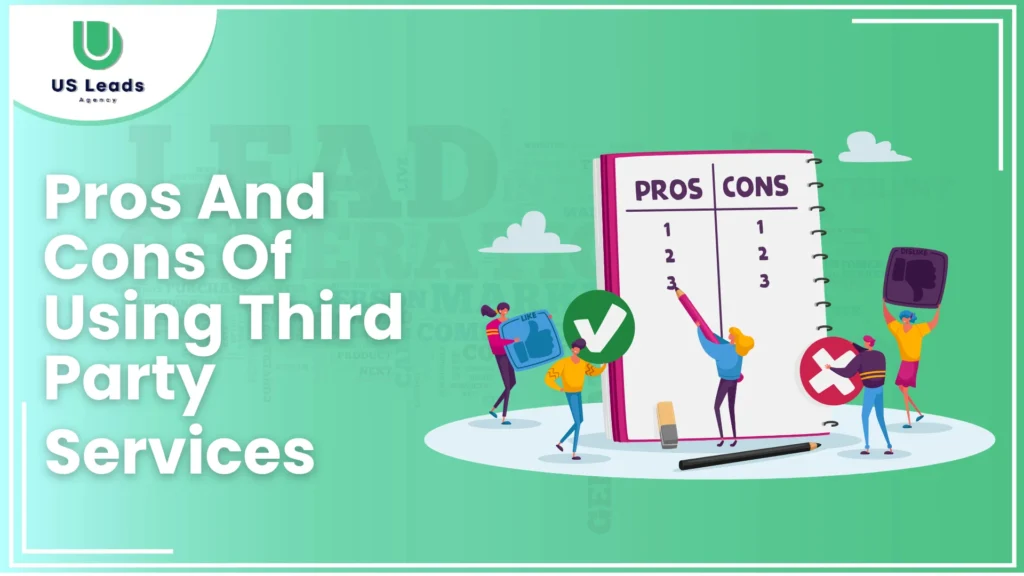
In today’s saturated final expense insurance market, outsourcing lead generation has become a go-to strategy for agents aiming to scale fast. According to a 2023 survey by Databox, 67% of insurance agents use third party lead generation companies, citing speed and volume as primary benefits.
This article analyzes the pros and cons of third-party lead services, comparing them to in-house strategies to help you make data-driven decisions.
Key Takeaways:
- Third-party leads offer faster scalability and reduced time on prospecting.
- Lead quality and freshness vary significantly across vendors.
- Third party leads vs in-house leads show a higher cost-per-conversion rate.
- Compliance issues in third party leads can pose legal risks.
- ROI of third party lead buying depends on vendor vetting and immediate follow-up.
Table of Contents
What Are Third-Party Final Expense Lead Services?
These are services or platforms that generate and sell insurance leads to agents. The leads may come from online ads, surveys, direct mail, or call centers. Lead generation services for insurance agents offer pre-qualified data points, age, location, interest, which agents use for outreach.
Pros and Cons Of Third-Party Lead Services:
Pros:
- Time Efficiency: Avoid time-intensive prospecting by receiving leads directly to your CRM.
- Scalability: Order leads based on business size or region, enabling fast expansion.
- Lower Infrastructure Costs:Skip content creation, ad testing, or CRM setups; just pay per lead.
- Focus on Sales:Free up time for consultations, policy planning, and cross-selling.
- Diverse Lead Sources: Reach people outside your typical demographic or geo-targets.
- Fast Implementation: Start campaigns instantly without building from scratch.
Cons:
- Quality of Third Party Leads: Leads can be outdated or filled with uninterested prospects.
- High Competition: Shared leads mean several agents might call the same person.
- Cost of Third Party Leads: Low per-lead cost can balloon due to low conversion rates.
- Lack of Control: You don’t decide targeting, messaging, or qualification criteria.
- Compliance Issues in Third Party Leads: Risk of violating TCPA, CAN-SPAM, or state-level privacy laws.
- Branding Limitations: Reduced ability to promote your brand vs. organic methods.
Tips For Maximizing ROI From Third-Party Leads:
- Vet Reliable Lead Vendors with reviews, case studies, and trial leads.
- Buy Exclusive Leads to limit competition.
- Contact Immediately, the shorter the delay, the better the outcome.
- Track Metrics like lead conversion rate comparison and customer lifetime value.
- Blend Tactics, combine with email marketing, referrals, and content campaigns.
- Prioritize Data Accuracy in Purchased Leads for better targeting.
Conclusion – Pros and Cons Of Third-Party Lead Services:
The pros and cons of third-party lead services must be weighed carefully. While they offer speed, reach, and convenience, challenges like lead freshness in third party sources, compliance risks, and lower conversion quality persist. The key to success lies in choosing the right vendors, responding swiftly, and aligning third-party strategies with in-house systems for sustainable growth.
FAQs:
Are third-party leads cost-effective long-term?
Only when vendors are vetted and leads are acted on quickly. Track ROI monthly.
How does third-party lead quality compare to in-house leads?
Typically lower. In-house leads are more engaged and brand-aware.
What are the main risks of using third-party lead providers?
Poor data quality, legal non-compliance, and high refund rates.
How fresh are third-party insurance leads usually?
Lead freshness varies; exclusive leads are more timely and valuable.
What’s the ROI of third-party lead buying?
ROI depends on cost per lead, close rate, and client value. Benchmark monthly.
